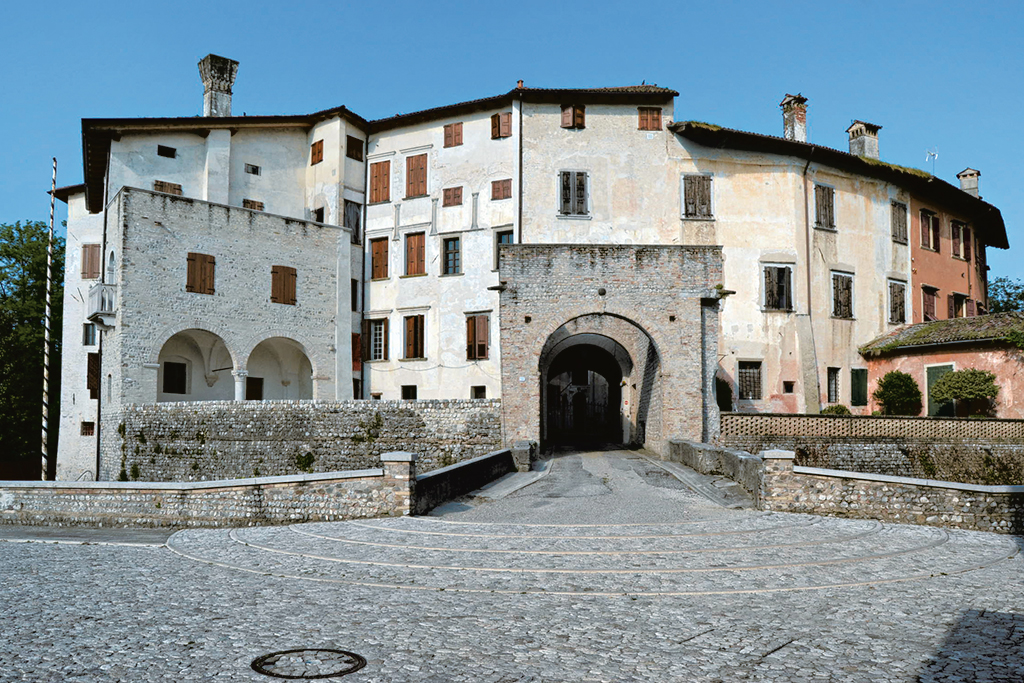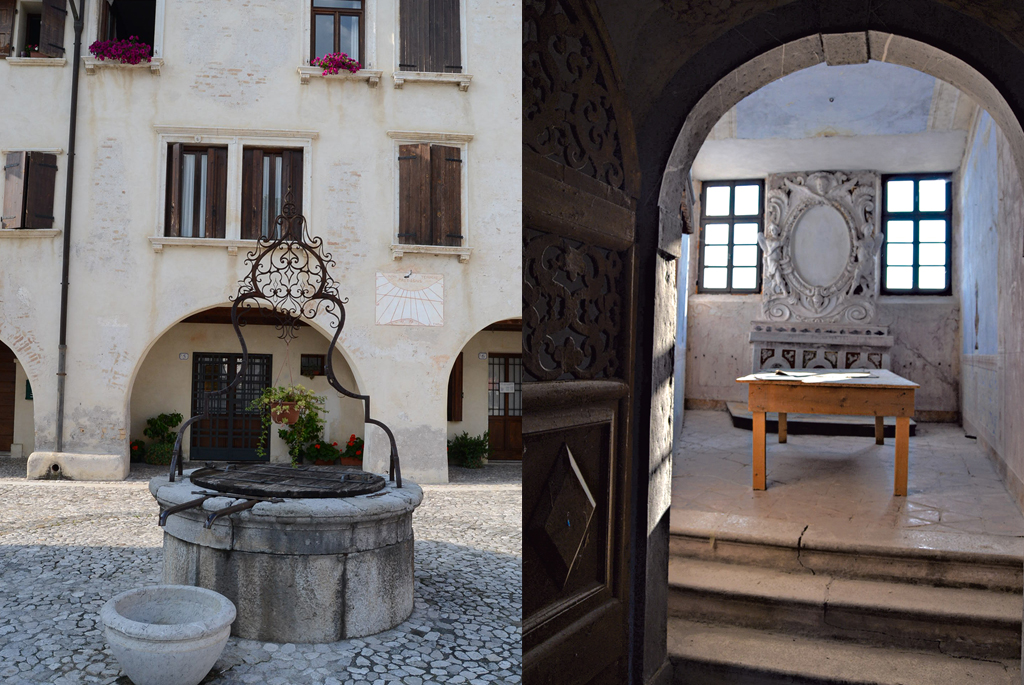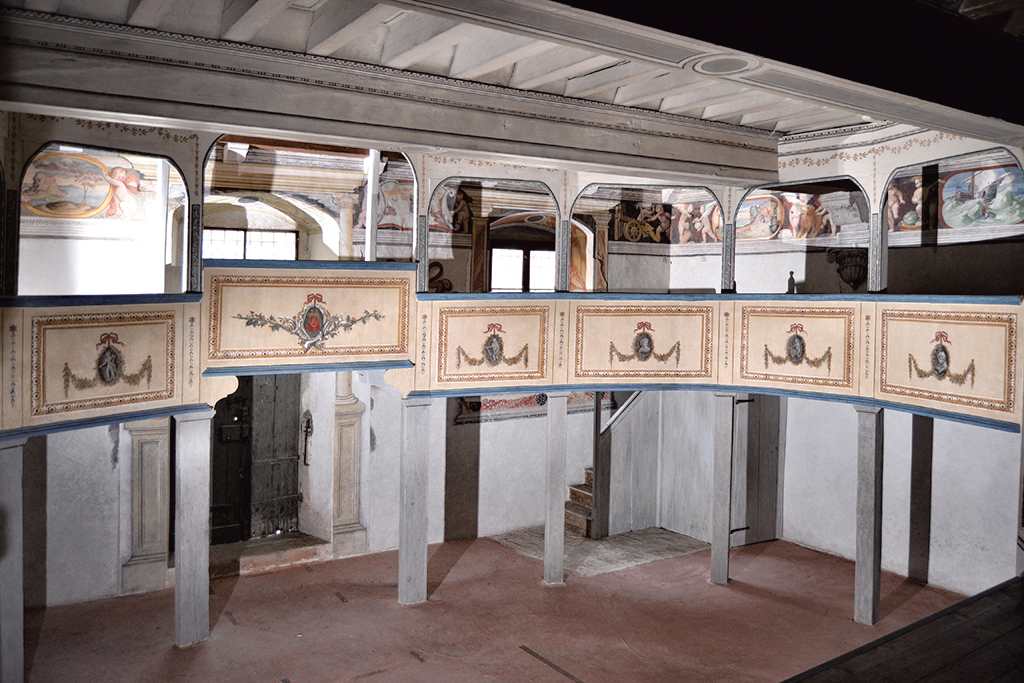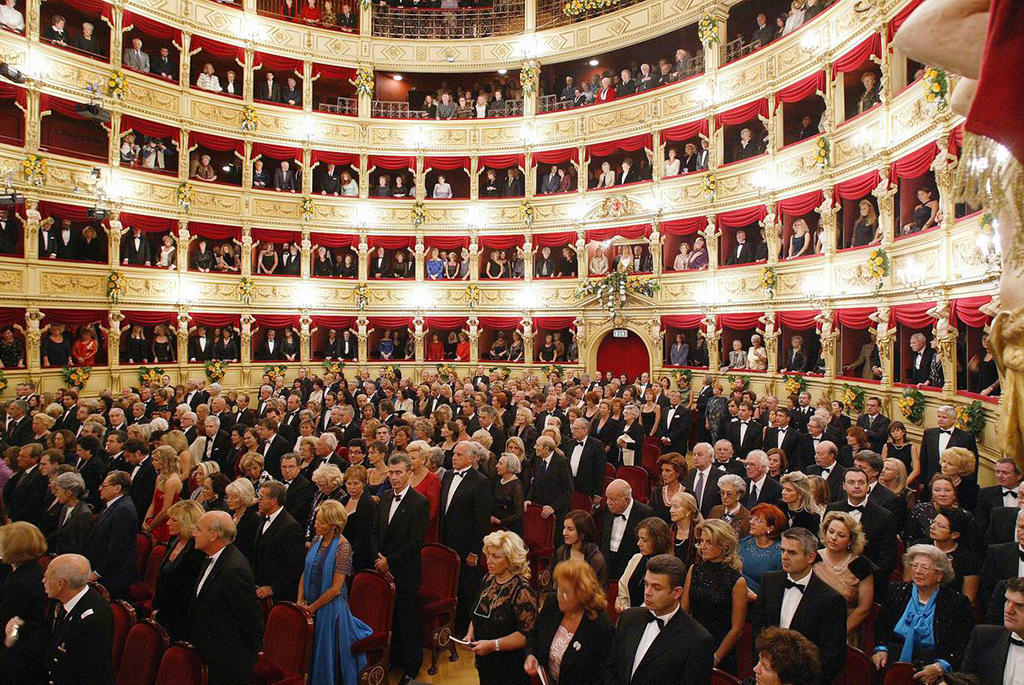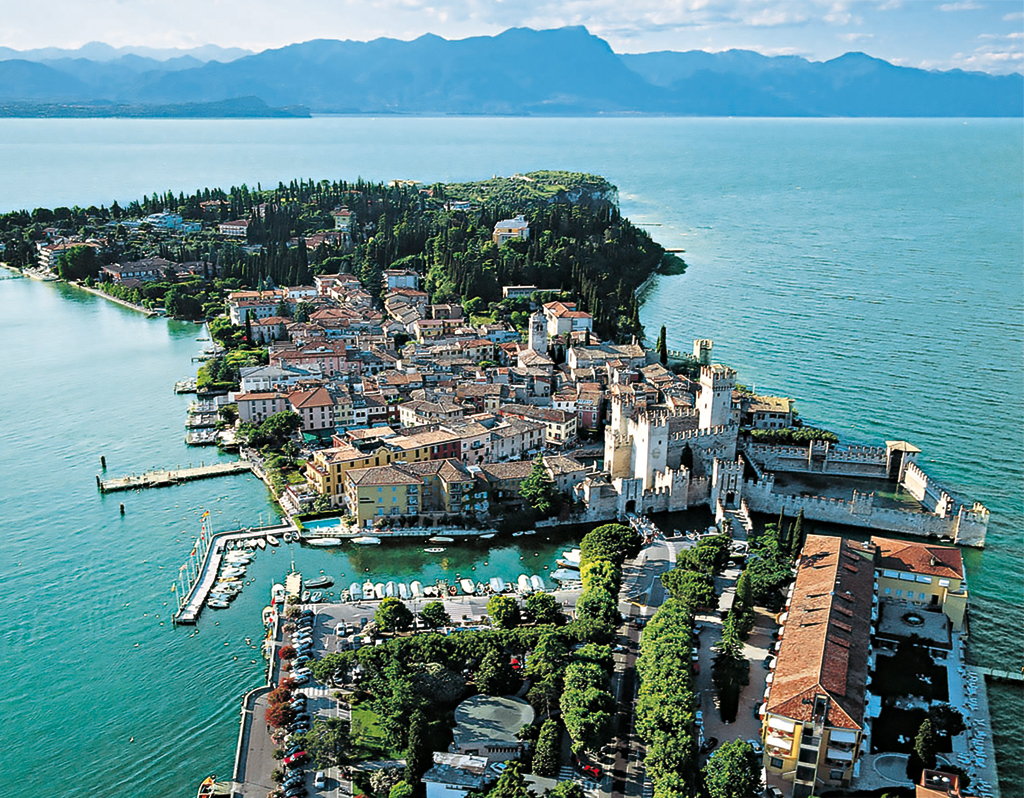
Lake Garda And Lugana A Marriage Made In Heaven
December 13, 2013
Food for thought
December 16, 2013The building blocks of our present are found in a myriad little things, now hidden by the accretions of the years. Our world is founded much more than we realise on these mundanities than on sweeping movements of armies or the actions of any individual leader, no matter how important. The private theatres of Italy’s Friuli region are among such hidden gems. Such spaces represent an early development of the theatre culture that flourishes today.
The sun is shining, and the little square in front of Valvasone castle glitters across the freshly refurbished cobblestones and the curtains of the local bar. The slightly uneven square makes the place quite impressive already, improved by recent refurbishments that washed centuries of gray from the streets of the village. Pacing along its small alleys is to head back into a distant past of fi efdoms and armours, velvets and gentle ladies, archers and jesters. It has to be said: if you happen to end up here during the summer festival, the feeling will become reality, since it is then that courtyards and corners populate with fi gures dressed in the fashion of knights and medieval soldiers, ladies in fancy colourful dresses and sackclothed peasants – like bartenders. During the days of the rievocazione storica, Valvasone walks back into the past to re-discover longforgotten days of its own golden era, when the access to cross the river Tagliamento was as important as a real frontier, allowing the little village to flourish as a dwelling place to families who were influential within the courts of Venice.
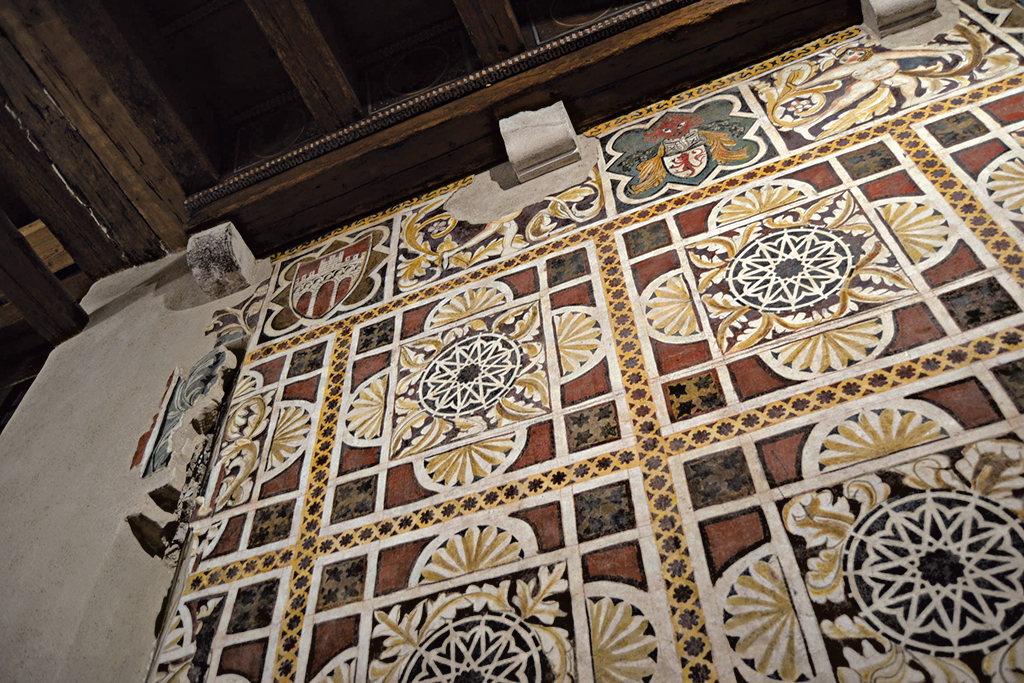
Valvasone is a little village hidden along the shores of the Tagliamento, in the Italian region of Friuli Venezia Giulia, some hundred miles east of Venice. Perfectly preserved in its medieval features, it stands out as a little pearl that history has spared from the architectural fakes of modernity. However, we did not travel here to walk through Valvasone’s cobblestone pathways or even to visit its castle, but to discover an even better-preserved treasure, hidden behind the elegant Renaissance walls: a private theatre. To gain access, DanteMag meets with Marina Boaro. Marina is an architect. While studying for a university project, she came across the existence of a fashion among the region’s prominent families during the Renaissance: private theatres. She was so intrigued with the artistic and historic insights surrounding her discovery, she went on to become an expert in the fi eld. Valvasone became her most intense passion, and her research encompasses the history of the theatre in the region, from Spilimbergo to Palmanova, all the way to Trieste.
‘Given the state of the theatre’s preservation, I was absolutely thrilled to go behind those walls and fi nd something so valuable’, she explains. ‘At the time, the restoration work on the castle was not complete. So I approached the then mayor of Valvasone Maurizio Bellot and Claudio Visintini – the architect who has been in charge of the restoration for more than two decades – to get access to the room. What I found was absolutely astonishing. In many similar cases, centuries of neglect had transformed the theatres into rubble. The quality of what was still available definitely spurred me on to further my research!’
Thanks to the help of Claudio Visintini and of the incumbent mayor, Markus Maurmair, today we can visit the castle. Marina leads the way. The renovation is at an advanced stage, even though there is quite a bit left to do before it can be opened to the public. It is like walking through history. We cross the moat, and enter the main antechamber, then walk down a small staircase and into what once was the water entrance to the castle. Then we spiral up round another little winding corner. All of a sudden, there is a wall and a little door, and you enter a magical space: two small openings – one that leads to the front of the theatre and one onto the stage. ‘The stage’, Marina explains, ‘is not original. When the family who owned the castle got into economic difficulties, they sold part of the original furniture and wings of the castle itself. The stage was sold for some reason at that time as well. However, the theatre is extremely well preserved. What I still find stunning, even now, after studying it for so long, is that within the walls of a castle, at its very heart, lies a fully-fl edged theatre, with stalls, stage and galleries. And it all perfectly fi ts inside a single room. Moreover, I’ve studied the acoustics, and they are incredible; it looks as though there were heavy velvet curtains that would dampen the reverb and echo. In this tiny place – simply for the private entertainment of the owners, the same high standards of technology were being used here as that found in the major theatres around Italy, such as Parma and Trieste.’ Rich families in the surrounding area, like the Querini-Monaco in Spilimbergo and the Mantica in Udine, invested in building theatres around the town – as in the case of Udine – and also within their own residences. It is astonishing to think that theatre in the seventeenth century become so fashionable that rich families felt compelled to build their own playhouses for merely private purposes. As in England, with Shakespeare, during the 1600s, theatre switched from being a simple, popular activity into a different kind of phenomenon that adhered to the ideas of the emerging mercantile class and the up-and-coming petite bourgeoisie. Valvasone and the private theatres of the region came into existence at that time, when landowners and merchants began to take an interest in theatre as an art that depicted their own class, and therefore performances began to be transferred into spaces, which gradually took on their own precise architectural form. ‘In the Venetian territories, which Valvasone used to be part of’, Marina explains, ‘the architecture favoured the flourishing of theatre. Loggias were the place where performances started. When the eighteenth century came around, Venice was living through its golden era of theatre. By 1758 there were so many playhouses in the city that there were not enough local writers to meet the huge demands. It is only natural that such a worldly activity, which at the same time spanned all social classes, spread around the Venetian territories, and with it the actors companies.’
‘Does that mean, in Italy, as in the England of Shakespeare and Marlowe, travelling companies of actors went from place to place putting on shows?’ I ask.
‘Exactly’, Marina replies. ‘Even a place as small as Valvasone had several seasonal companies coming here to perform. There are documents that testify to their presence around the territory of both Venice and the Austrian Empire. In fact, by the end of the eighteenth century, Vienna – even more so than Venice – had become the cultural focal point for the courts of Europe, and theatre was turning into musical spectaculars.’ She leads me around the castle, showing me how the renovation has progressed. She stops in front of an unusual painting, showing two anthropomorphic figures in the form of a wolf and a donkey: ‘In this area, there are several examples of castles that held rather important strongholds, for they guarded the crossing points over the nearby river Tagliamento. Here, you can see the Valvasone family – whose symbol is the wolf – being paid homage to by the emperor himself!’
‘Is he the donkey? That’s pretty outrageous!’ I exclaim.
‘Do not be fooled by our modern conceptions. In those times, the donkey was regarded as a very wise animal!’ Marina replies, with a chuckle. ‘This room was used as a reception room, with direct access across the moat to a private entrance. It probably shows that it was in medieval times that the family attained its greatest prestige. Afterwards, the role of the commercial routes diminished in importance, but the reputation of Valvasone continued into the nineteenth century. In fact, there are important documents indicating that even Napoleon Bonaparte stayed at the castle around the time of the Campoformio Treaties in 1797.’ She points to an extravagant room on the right. ‘Probably he slept there, although even the descendants of the Valvasone family cannot agree on which room exactly! There’s a chance that he even had a special performance staged exclusively for him in the theatre!’
‘You mentioned Vienna and musical theatre’, I ask Marina. ‘What did the Viennese cultural boom mean for the small private theatres?’
‘The extraordinary period of private theatres went out of fashion at the end of the eighteenth century. By about 1750, many of the most famous theatres in the area, like the Rossetti in Trieste, the Fenice in Venice, the Regio in Palmanova, had been built. By that time, music had become a compulsory requirement of any theatre, which therefore demanded larger spaces and more refi ned acoustics. The Viennese tradition swept through the area like a cultural wave from the east – which belonged to the Austrian Empire – while the simultaneous decline of Venice’s power marked the end of the small private theatres. From then on, the commedia dell’arte and the opera became the “in” thing for local nobles and emerging bourgeoisie.’ She sighs. ‘It is a matter of historical good fortune that the Valvasone’s private theatre still exists; otherwise we would have lost a vital part of our entertainment culture roots.’
Leaving the castle, I cannot help but agree with Marina. In so many cases the recent studies of small history, of the little diamonds of our past, have demonstrated and preserved that past much better than any big, mainstream history.
From Valvasone, we head east and park in a wide space that used to be the parade ground of Spilimbergo, another medieval village which has preserved most of its features from past centuries. These include an amazing Romanesque church, just behind the parade ground, and another castle a few metres away from the town hall. ‘Here’, Marina explains, ‘there used to be an extraordinary theatre within the private apartments of the Countess Querini-Monaco, a fl amboyant established family who had fallen on hard times quite dramatically.’ Marina takes me to the top of a small alley-way. ‘Unfortunately it was pulled down to make space for new rooms during the 1950s, a real disgrace from the point of view of historical conservation. However, you can tell from the surroundings that a sort of “playhouse vogue” started sometime during the early eighteenth century. The history of yet another small village can make up for the lack of bigger pictures at a higher historical level. So I will now take you a few miles south, to Palmanova, to show you how the story changed.’
Palmanova, the starred city, was created from scratch by the Venetians to act as a city-fortress to defend Venice’s outer boundaries. Built in the form of a multi-spiked star, concentric lines spread out from the central square, fi nally forming the boundaries of the city. On one side of the square, lies the Teatro Modena, named after a famous actor of the late 1800s. ‘The original building dates back to the eighteenth century’, Marina tells me. ‘However, the differences between public theatres and the small private rooms you have seen are striking. The big difference, first and foremost, is in their purpose. In fact, the creation of huge public theatres explains how they became a source of culture, both musical and literary. They were used as a privileged site for social relations and transacting business as well. In reality, theatre as we know it starts when buildings like these were built; and when the great Viennese musical theatre made its way west, from Trieste towards Venice, the time of small, private theatres was already over. Moreover, the importance of Valvasone, Spilimbergo and Udine diminished along with Venice’s decline, making it even more amazing that the private theatre you saw in Valvasone still stands.’
Indeed, a great little story can tell more than many grandiose tales. Whether it was created as a result of a true passion or was simply an expression of a fashion, the little gem hidden within the walls of a remote castle explains how the path of history can change suddenly and make our futures very different to what they might have been. Fortunately, sometimes little things are spared the ravages of time and stand as a reminder of what our past was. Be it good or bad, it is where we come from, a heritage that must be preserved.
Hence, our thanks go to Marina for her great work, for her intense passion to keep alive the memory of a time long gone. And thanks to Valvasone, a delicate living wonder. Sitting at the table of a nice osteria in the square, we drink to our past, to theatres, and to memory, the most precious gift we have to appreciate our heritage!



